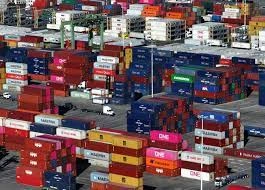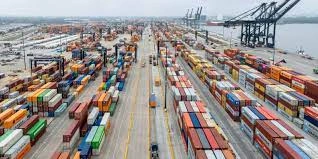Trump Just Revealed His New Tariff Plan — Here’s What You Need to Know
In a sweeping and controversial move that marks another chapter in his break from traditional U.S. trade policy, President Donald Trump has unveiled a new tariff framework targeting nearly every country in the world. The announcement, made late Thursday night with just hours left before the original August 1 deadline, solidifies what the administration calls a “universal” approach to resetting global trade.

Under this plan, most imported goods will face new or increased tariffs, with some nations seeing duties as high as 41%. The policy is a continuation of Trump’s efforts to reverse decades of globalization that have defined the post-World War II world economy.
What Are the New Tariffs?
The updated tariff policy is complex and multi-layered. Here’s how it breaks down:
- 10% Tariff: Applies only to countries with which the United States runs a trade surplus (i.e., exports more than it imports).
- 15% Tariff Floor: Set for approximately 40 countries with which the U.S. has a trade deficit.
- Higher Tariffs (15–41%): Over two dozen nations will face increased tariffs due to large trade imbalances or failure to reach a new trade framework with the U.S.
A senior administration official clarified that although the 10% rate remains unchanged since April, it now covers only a select group of surplus nations. The majority of trading partners, especially those with deficits, will now face tariffs of 15% or higher.
Which Countries Are Facing Higher Tariffs?
The White House named 26 countries that will face tariffs above 15%, citing their “excessive trade deficits” with the United States. Here’s a snapshot:
- 30% Tariffs: Algeria, Bosnia and Herzegovina, Libya, South Africa
- 25% Tariffs: India, Kazakhstan, Moldova, Tunisia, Brunei
- 20% Tariffs: Bangladesh, Sri Lanka, Taiwan, Vietnam, Philippines
- 19% Tariffs: Cambodia, Indonesia, Malaysia, Pakistan, Thailand
- 35% Tariffs: Iraq, Serbia, non-exempt Canadian goods
- 40% Tariffs: Laos, Myanmar
- 41% Tariff: Syria
- 39% Tariff: Switzerland
Additionally, Mexico negotiated a 90-day extension of its current 25% tariff, avoiding a threatened 30% hike—for now. Canada, however, saw its tariffs jump from 25% to 35%, effective immediately as of Friday.
When Do the New Tariffs Start?
Originally expected to go into effect on August 1, the new tariff system will now be implemented on August 7, 2025. The delay is intended to give U.S. Customs and Border Protection sufficient time to reprogram systems and begin collecting the new duties.
Exception: Canada’s updated 35% tariff took effect immediately on Friday, August 1, at 12:01 a.m. ET.
Who Got Exemptions?
Some countries managed to avoid the higher tariff hike—at least for now.
- United Kingdom & China: Both nations reached new trade frameworks with the U.S., holding tariffs at previous levels for most goods. However, the China deal is set to expire within two weeks, and new hikes could follow if an extension isn’t agreed upon.
- European Union, South Korea & Japan: A last-minute deal resulted in a revised 15% tariff, instead of the originally planned 30%.
Still, even these countries are now facing higher rates than the universal 10% tariff introduced in April, underscoring Trump’s aggressive push toward reciprocal trade terms.
Are These Tariffs Legal?
The legality of Trump’s tariff moves remains in dispute.
The administration has cited the International Emergency Economic Powers Act (IEEPA) as the legal basis for unilaterally imposing these tariffs. However, a federal court in May ruled that the use of IEEPA in this context exceeded presidential authority.
Legal analysts point out that IEEPA doesn’t mention tariffs and was never intended to be a blanket tool for economic policy. Judges hearing the case this week expressed skepticism, with one asking, “Can the trade deficit be an extraordinary and unusual threat when we’ve had trade deficits for decades?”
The matter could take months to resolve, especially if it escalates to the Supreme Court. Still, the administration appears determined to push forward regardless of legal uncertainty.
How Will This Affect the Economy?
The economic fallout is hard to predict—but early signs suggest a mixed impact:
📊 Potential Benefits:
- Increased domestic production: Especially in steel, agriculture, and basic manufacturing.
- Revenue for federal government: Tariffs could generate hundreds of billions in import duties, potentially offsetting deficits.
🛒 Likely Downsides:
- Higher consumer prices: Companies like Walmart and Procter & Gamble already announced price hikes on basic goods.
- Disruption of global supply chains: Especially for small to mid-sized businesses.
- Trade retaliation: Other countries could impose counter-tariffs on American exports, such as agriculture and tech.
Will the Tariffs Be Extended or Changed Again?
History suggests: probably.
Trump previously extended the “Liberation Day” tariffs announced in April and delayed implementation for several nations. Though the president has claimed no further delays are planned, he’s also been known to make sudden reversals, often announced on Truth Social or during rallies.
Final Thoughts: A New Era of Trade or Economic Gamble?
With these tariffs, President Trump has doubled down on his America-first trade doctrine, aggressively targeting countries with trade surpluses and seeking to reestablish the U.S. as the dominant manufacturing power.
While this approach may appease certain domestic industries and political supporters, it also risks fueling global tensions, disrupting fragile supply chains, and triggering inflationary pressures just as the U.S. economy shows signs of cooling.
Follow us for more news at Valleynewz.com

